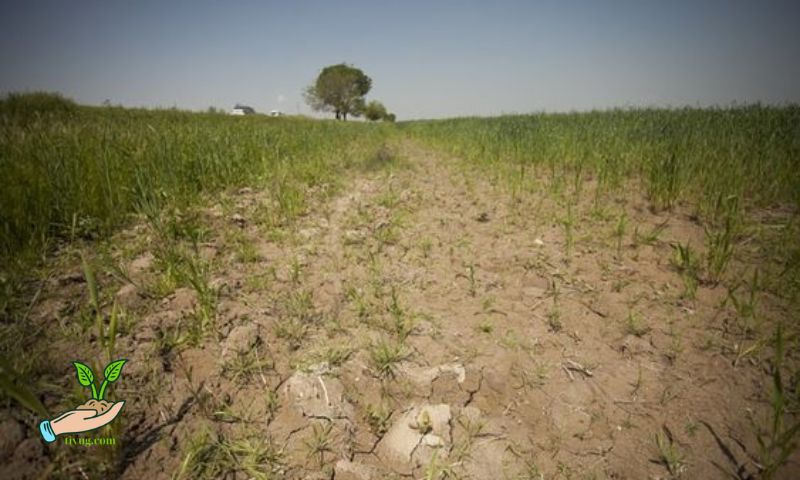Acid sulfate soils (ASS) are a critical environmental concern globally due to their significant impacts on water quality, ecosystems, and various industries. Understanding their formation, characteristics, and effective management strategies is essential for mitigating these impacts and ensuring sustainable development.
Formation of Acid Sulfate Soils

Acid sulfate soils develop under specific conditions where sulfide minerals in the soil are exposed to air and oxidize, producing sulfuric acid. This process typically occurs in coastal or inland wetlands, where water levels fluctuate, exposing previously waterlogged soils to air. When sulfide minerals such as iron sulfides (pyrite) react with oxygen and water, they release sulfuric acid, lowering the soil pH significantly. The presence of organic matter can accelerate these reactions, exacerbating soil acidity levels.
Characteristics of Acid Sulfate Soils
Acid sulfate soils present a unique challenge in agricultural and environmental contexts, distinguished by their exceptionally low pH levels, frequently measuring below 4.0, primarily due to the presence of sulfuric acid. This acidity stems from the oxidation of sulfide minerals present within the soil, releasing sulfuric acid into the environment. This phenomenon not only alters soil chemistry but also mobilizes heavy metals and other potentially toxic elements, posing significant risks to both terrestrial and aquatic ecosystems.
The distinctive orange-yellow coloration of acid sulfate soils is a visible indicator of their acidic nature and iron oxide precipitation resulting from prolonged acidification processes. This coloration underscores the extensive alteration of soil minerals and the release of iron compounds, further complicating the soil’s chemical composition and ecological impact.
In addition to their high acidity and potential toxicity, acid sulfate soils typically exhibit poor fertility and structural integrity. The acidic conditions inhibit the availability and uptake of essential nutrients by plants, thereby limiting agricultural productivity. Moreover, the soil structure may become compacted and less porous over time, reducing water infiltration and root penetration, which are crucial for plant growth and ecosystem resilience.
Environmental Impact
The environmental impacts of acid-sulfate soils are profound, particularly concerning water quality. When these soils are disturbed or drained, sulfuric acid and associated heavy metals can leach into nearby water bodies. This acidification of water systems can harm aquatic life, disrupt food chains, and degrade water quality, affecting drinking water sources and biodiversity. The release of aluminum and other metals further exacerbates these impacts, potentially leading to fish kills and ecosystem collapse in severe cases.
Management and Remediation

Managing acid sulfate soils requires a multifaceted approach that begins with identification and assessment. Techniques such as soil testing and mapping are crucial to determine the extent and severity of acid sulfate soil deposits. Once identified, several management strategies can be employed:
- Water Management: Maintaining stable water levels to prevent the exposure and oxidation of sulfide minerals is fundamental. Controlled drainage and water retention structures can help regulate water levels, minimizing the risk of acidification.
- Neutralization: Applying lime or other alkaline materials to neutralize soil acidity is a common remediation technique. This process raises the soil pH, reducing the mobility of toxic elements and improving soil fertility. Careful monitoring is essential to ensure effective neutralization without unintended environmental consequences.
- Vegetative Cover: Establishing vegetative cover, particularly with species tolerant to acidic conditions, can stabilize soil structure and reduce erosion. Plant roots can also absorb excess water and nutrients, contributing to overall soil health and stability.
- Engineering Solutions: In areas where acid sulfate soils pose significant risks to infrastructure or water quality, engineered solutions such as impermeable barriers or protective liners may be necessary. These measures prevent acid drainage from reaching sensitive environments or structures.
- Monitoring and Adaptive Management: Regular monitoring of soil pH, water quality, and ecological indicators is crucial to assess the effectiveness of management strategies. Adaptive management allows for adjustments based on monitoring data, ensuring long-term sustainability and minimizing environmental impacts.
Applications and Industries Affected

Several industries are particularly vulnerable to the impacts of acid sulfate soils:
- Agriculture: Acid sulfate soils can limit agricultural productivity due to their low fertility and high acidity. Farmers in affected regions must employ soil amendment techniques to improve soil conditions for crop growth.
- Construction and Infrastructure: Infrastructure projects in areas with acid-sulfate soils face challenges such as foundation instability and corrosion of building materials. Proper site assessment and engineering solutions are essential to mitigate these risks.
- Natural Resource Management: Acid sulfate soils can impact natural resource extraction industries, such as mining and forestry, by contaminating water sources and affecting ecosystem health. Responsible resource management practices are critical to minimize environmental footprints.
Conclusion
In conclusion, acid sulfate soils represent a significant environmental challenge requiring proactive management and mitigation strategies. Understanding their formation, characteristics, and environmental impacts is crucial for implementing effective management practices. By employing techniques such as water management, neutralization, and adaptive monitoring, stakeholders can minimize the adverse effects of acid-sulfate soils on ecosystems, water quality, and human activities. Continued research and collaboration are essential to developing innovative solutions and ensuring sustainable development in regions affected by acid-sulfate soils.

